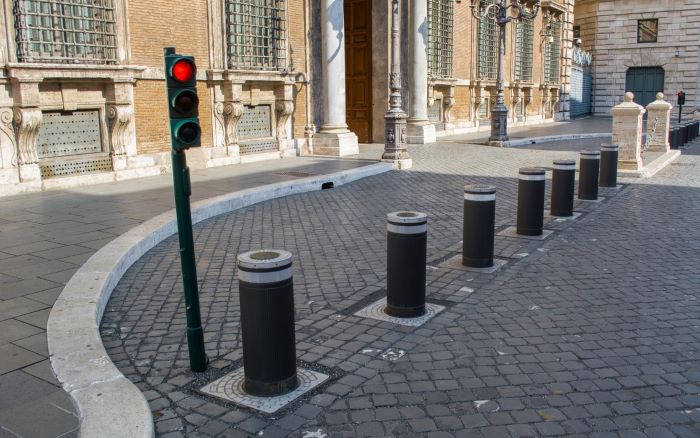
How Deep Should a Bollard Go?
Bollards, sometimes incorrectly known as bollard fencing, are an effective barrier to vehicles while still leaving the area open to pedestrian traffic. This makes it an attractive urban alternative to fencing.
However, to be an effective barrier to vehicular traffic and protect people or property in the area from vehicles that might accidentally hit the bollards, it’s very important to design them properly. So, let’s take a closer look at how deep bollards should go.
Consult an Engineer
The first thing you should know is that there’s always some level of legal liability when there’s the possibility of people being injured or killed or property being damaged. So if there’s any risk of that kind of thing happening in the area where you’re considering installing bollards or bollard fencing, you need to speak to an engineer.
Engineers are able to calculate the force that will be applied to the bollards by a vehicle striking them, and they’ll be able to advise you about the best materials and design for safety. Never try to work around this to save money. If something goes wrong and you have, you could be in serious trouble.
Consider Crash-Rated Bollards
The next thing you need to do when you’re wondering how deep a bollard should go is to consider crash-rated bollards.
These are bollards or bollard fencing that have been extensively tested with actual vehicular impact to make sure they can stand up to a certain amount of force.
Different countries and regions have different crash rating systems, and you do need to ensure that you follow the manufacturer’s installation instructions exactly to ensure that the bollards perform as they are designed to.
You might still need to employ an engineer to confirm that the ground conditions and other factors on your site meet the required parameters set by the manufacturers for their product.
At Least As Deep as They Are Tall
If you’re not going to be installing bollards that will be required to protect lives or property, you can usually hire a fence company to install an ordinary commercial-grade bollard, which is usually a fairly substantial piece of steel pipe filled with concrete, installed in a concrete footing, and usually painted a very visible color like yellow.
Precast concrete bollards are another good option, although because concrete has very little tensile strength, they tend to become more damaged even with minor impact, and may require more frequent replacement.
A good rule of thumb when you’re designing bollards is to try to make them go as deep as they are tall. This will usually give you a large enough portion in the ground and a deep enough concrete base to make them an adequate barrier.
We usually don’t recommend base plating bollards either, unless there’s no risk of impact by heavy vehicles or the base plate system has been designed by an engineer and thoroughly tested.


